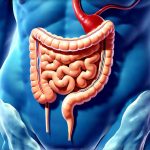Indigestion is a frustratingly common complaint, affecting millions worldwide. It’s often dismissed as simply “something I ate” or attributed to stress, leading many to endure ongoing discomfort without uncovering the underlying cause. Symptoms can range from bloating and gas to abdominal pain, nausea, diarrhea, or constipation – a truly diverse set of experiences that make pinpointing the source incredibly challenging. What if your persistent digestive woes aren’t just random occurrences, but are indicative of something deeper happening within your gut? Many individuals unknowingly live with Small Intestinal Bacterial Overgrowth (SIBO) as the root cause of their chronic indigestion, and recognizing this possibility is the first step towards finding lasting relief.
The complexity of digestion means there’s a lot that can go wrong. We often focus on the large intestine when discussing digestive health, but the small intestine plays a pivotal role in nutrient absorption and overall well-being. It’s here where the majority of our food breakdown occurs. When this delicate ecosystem is disrupted – specifically when excessive bacteria colonize the small intestine – it can lead to a cascade of symptoms that mimic many other conditions, making diagnosis difficult. This article will explore SIBO, its connection to ongoing indigestion, how it differs from other digestive issues, and potential avenues for investigation and management (always in consultation with your healthcare provider).
What Exactly is SIBO?
SIBO stands for Small Intestinal Bacterial Overgrowth. It’s a condition where there’s an abnormally large amount of bacteria present in the small intestine. Normally, the small intestine contains relatively few bacteria compared to the colon. A healthy digestive system has natural mechanisms – like gut motility (the movement of food through the digestive tract), stomach acid production, and immune function – that keep bacterial numbers in check. When these mechanisms are compromised, bacteria can migrate up from the large intestine into the small intestine, or they can proliferate within the small bowel itself. This overgrowth disrupts normal digestion and absorption processes.
The type of bacteria involved also matters. SIBO isn’t always about just more bacteria; it’s often about the wrong kinds of bacteria. While some bacteria are helpful, an excess of certain strains can produce gases as they ferment undigested carbohydrates. These gases contribute to bloating, distension, and abdominal discomfort. Furthermore, bacterial overgrowth can damage the intestinal lining, leading to malabsorption of vital nutrients like vitamin B12, iron, and fats. This nutrient deficiency exacerbates symptoms and impacts overall health.
Importantly, SIBO isn’t a diagnosis made solely on symptom presentation. It requires specific testing (discussed later) to confirm its presence and identify the predominant bacterial types – whether they are hydrogen-dominant, methane-dominant, or hydrogen sulfide-producing, as this influences treatment strategies. Each type presents with slightly different symptoms and requires tailored approaches. Understanding the brain gut loop can also provide insight into how SIBO manifests in individuals.
How Does SIBO Differ From IBS?
Many people confuse SIBO with Irritable Bowel Syndrome (IBS) because their symptoms overlap significantly. Both conditions can cause bloating, gas, abdominal pain, diarrhea, and/or constipation. However, they are distinct entities. IBS is a functional gastrointestinal disorder, meaning there’s no detectable structural or biochemical abnormality in the gut; it’s more about how the gut functions. SIBO, on the other hand, is a structural issue – an actual overgrowth of bacteria.
- IBS is often diagnosed after excluding other conditions like celiac disease and inflammatory bowel disease (IBD).
- SIBO can be a cause of IBS symptoms in some individuals. In fact, studies suggest that up to 60% of people diagnosed with IBS may have underlying SIBO.
- Treating the SIBO might alleviate IBS symptoms for those where it’s a contributing factor.
The key difference lies in the root cause. While managing IBS typically focuses on symptom control through dietary changes and stress management, addressing SIBO requires directly targeting the bacterial overgrowth and restoring gut balance. It’s crucial to determine if SIBO is present before attributing symptoms solely to IBS. A healthcare professional can help differentiate between the two conditions through appropriate testing. Sometimes emotional trauma can also mimic IBS and SIBO symptoms, making accurate diagnosis crucial.
Testing for SIBO: What are the Options?
Diagnosing SIBO requires more than just a review of your symptoms. Several tests are available, each with its pros and cons:
- Lactulose Breath Test (LBT): This is currently considered the gold standard test. You drink a lactulose solution (a synthetic sugar that bacteria ferment) and then breathe into collection bags at specific time intervals. The levels of hydrogen, methane, and/or hydrogen sulfide gases exhaled indicate bacterial activity in the small intestine. Elevated gas production suggests SIBO.
- Glucose Breath Test (GBT): Similar to LBT, but uses glucose instead of lactulose. It’s generally considered less sensitive than LBT, as it only detects bacteria that can ferment glucose.
- Duodenal Aspirate & Culture: This is the most invasive test, involving a small intestinal biopsy and culture. While highly accurate, it’s rarely used due to its invasiveness and potential for contamination.
Choosing the right test depends on your individual situation and healthcare provider’s recommendations. It’s important to note that breath tests can yield false positives or negatives, so interpretation should be done by a knowledgeable practitioner experienced in SIBO diagnosis. Testing isn’t always straightforward – preparation guidelines must be followed meticulously for accurate results. If you suspect SIBO is causing your issues, tests that pinpoint the root cause of chronic fullness are a great starting point.
Potential Causes and Risk Factors
SIBO doesn’t just happen randomly; several factors can contribute to its development:
- Low Stomach Acid: Adequate stomach acid is essential for killing bacteria entering the digestive system with food. Conditions or medications that reduce stomach acid (like proton pump inhibitors) increase the risk of bacterial overgrowth.
- Impaired Gut Motility: Slowed gut motility allows more time for bacteria to colonize the small intestine. This can be caused by conditions like diabetes, hypothyroidism, or certain medications.
- Structural Abnormalities: Diverticula (small pouches in the intestinal wall) or strictures (narrowing of the intestine) can create pockets where bacteria accumulate.
- Post-Antibiotic Use: Antibiotics disrupt the gut microbiome, potentially allowing harmful bacteria to proliferate.
- Chronic Pancreatitis: Reduced pancreatic enzyme production impairs digestion and increases the risk of bacterial overgrowth.
- Food Poisoning: Severe food poisoning can sometimes lead to post-infectious SIBO.
Understanding how swallowed air contributes to digestive discomfort can also help you understand the complexities of gut health. It’s often a combination of factors that leads to SIBO, making prevention challenging but highlighting the importance of addressing underlying digestive health issues proactively. Recognizing these risk factors is crucial for early intervention and management. Also, consider how your gut test results might be impacting overall wellbeing, including sleep quality. Remember, this information is for educational purposes only and should not be taken as medical advice. Always consult with your healthcare provider for personalized diagnosis and treatment plans. If you experience acid reflux frequently, it’s best to seek medical attention promptly. Finally, consider if you can be allergic to your own gut bacteria.


















